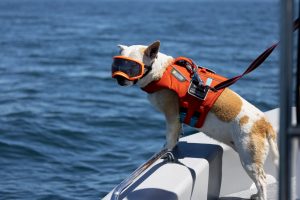From detection to protection: orca research and conservation
One of the most recognized whales, especially in the Pacific Northwest where they live in pods, is the orca, also known as the killer whale.
Ahead of Orca Recovery Day taking place on 15 October, we spoke with killer whale researcher and expert in her field, Dr. Giles.
With a special focus on the Southern Resident Killer Whale population, found off Washington, Oregon, Northern California, and British Columbia, Dr. Giles shared insights into the declining population, her conservation research, and the excellent placement of the University of Washington to study these marine mammals.
As the Science and Research Director of the non-profit Wild Orca program, Dr. Giles’ research involves the non-invasive collection of fecal samples from the Southern Resident population to deliver insights into the health of individual killer whales, and by proxy, the entire population.
With only 73 left of the Southern Resident population, non-invasive techniques are critical in conservation efforts and killer whale research.
So why does poop matter?
A whole host of things can be seen from one fecal sample. Feces provides in-depth insights into levels of stress hormones, pregnancy hormones, nutritional health, and the presence of man-made pollutants in the food chain of killer whales.

If you wondered how fecal matter left behind in the seas is collected, let us introduce another mammal: the dog. Specially trained scent detection dogs are an integral part of this killer whale research team, and can lead researchers at sea directly to fecal matter up to a nautical mile away!
Using dogs to sniff out the poop is non-invasive and allows research teams to be minimally disruptive to pods of killer whales.
Adding an extra wow factor to this program, the team uses rescue shelter dogs, giving them a new life and purpose as killer whale researchers.
The conservation canine technique, first pioneered by UW Professor Samuel Wasser with North Atlantic right whales on the East Coast with colleagues Barbara Davenport and Roz Rolland, started the UW killer whale program in 2008 which has since been turned over to Wild Orca.
Training involves identifying dogs with a high play drive and matching that with the smell of killer whale feces. When successfully finding the source of the scent, the dog enjoys playtime with a favorite toy. And so, the training continues from the terrestrial realm – in buildings and fields – to the marine realm of the wide-open sea.
Taking rein and standing at the bow of the boat is Eba, who uses her nose to guide her handler and the vessel captain and acts as a wind indicator, displaying specific body language when fecal matter has been scented and tracked.
The amazing feat of dog scent detection is even more remarkable when killer whale poop – which already can be fairly small in comparison to the size of the animal – reflects a period of famine among killer whales and is found beneath the surface.
Normal healthy populations that have a lot to eat tend to have “floaters.” In periods of famine, such as indicated within many of the Southern Resident killer whales, the feces is more loose and liquid and stays underwater, making the dog’s job even harder and all-the-more impressive.
How does this information inform conservation?
One of the jobs of Dr. Giles and the Wild Orca team is summed up by the motto: from detection to protection.
Wild Orca takes the science and puts it into the hands of the public and policymakers to make informed decisions regarding the state of health of orca populations. Making it understandable, relevant and educational, the team attends regular meetings with officials to share the latest insights into population health.
Generally, however, the news is negative. The most recent paper from Wasser and his team, shows a staggering 69% of females in the Southern Resident population losing their calves because of nutritional deprivation. In a population of 73, 6-8 living babies should be born a year, and that’s not happening.
This trend largely stems from issues within the whales’ food source. Unlike other orcas, Southern Residents are fish-eating mammals, relying on Chinook (also called King) salmon. With these fish populations highly imperiled along the Pacific Coast, killer whales are turning to their own fat stores which in turn releases harmful toxins into their bloodstream.
In periods of famine, the metabolism of blubber kicks off a downward spiral in the health and life expectancy of killer whales. Combined with other factors indicated by elevated stress hormones such as vessel presence and associated noise, the Southern Residents are in desperate need of conservation.
The Salish Sea: where UW resides
UW is uniquely positioned in one of the most dynamic watershed and ecosystems in the world: The Salish Sea. Studying here, particularly a subject like marine biology, means you have courses at your fingertips that provide the opportunity to learn about the natural world whilst getting hands-on, interactive experience. And the opportunity to get involved in projects focused on marine mammals and conservation efforts, as featured in the work of Dr. Giles.
With the satellite campus at Friday Harbor Labs, which hosts a whole class on marine mammals and killer whales, the opportunity to study and research topics taking place around you is unparalleled.